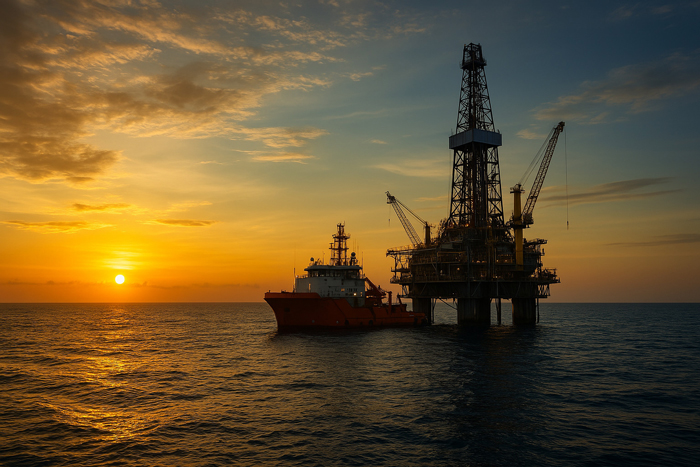The Andaman Basin emerges as a key frontier in India’s energy exploration, with drilling operations by ONGC and OIL targeting depths of up to 5,000 metres in ultra-deepwater regions.
India is witnessing a renewed surge in oil and gas exploration, particularly offshore, revealing vast untapped hydrocarbon potential. In a written reply to a starred question in the Rajya Sabha, Hardeep Singh Puri, Union Minister for Petroleum and Natural Gas, said the opening of nearly one million square kilometres of previously restricted offshore acreage in 2022 had transformed the sector.
This shift has unlocked significant deepwater prospects, especially in frontier regions such as the Andaman-Nicobar (AN) offshore basin, fuelling the current uptick in exploration activity.
Since 2015, exploration and production (E&P) companies in India have reported 172 hydrocarbon discoveries, including 62 offshore. Puri underscored the geological promise of the AN basin, located at the junction of the Andaman & Nicobar basins within the Bengal-Arakan sedimentary system. Its tectonic setting at the boundary of the Indian and Burmese plates has produced stratigraphic traps favourable for hydrocarbon accumulation.
The basin’s potential is further amplified by its proximity to proven petroleum systems in Myanmar and North Sumatra. Recent gas discoveries in South Andaman offshore Indonesia have sparked global interest, highlighting geological continuity across the region.
While the geology is promising, Puri emphasised that the real breakthrough stems from strategic policy reform and a recalibrated exploration approach. The revised framework has enabled aggressive seismic data acquisition, initiation of both stratigraphic and exploratory drilling, and greater engagement with international partners. Several global players have shown strong interest in newly accessible frontier blocks.
Exploration in Motion
National oil companies have commenced drilling four offshore stratigraphic wells, including one in the AN basin. These scientific wells test geological models, validate petroleum systems and help de-risk future commercial exploration. While commercial reserves remain unconfirmed, the initiative marks a systematic, knowledge-driven approach.
ONGC and Oil India Ltd (OIL) have launched ambitious campaigns in the Andaman ultra-deepwater region. For the first time, drilling operations are targeting depths of up to 5,000 metres. One such wildcat well, ANDW-7, drilled in a carbonate play in the East Andaman Back Arc region, has yielded promising insights. These include traces of light crude and condensate, heavy hydrocarbons such as C-5 neo-pentane in trip gases, and reservoir-quality facies.
These findings confirm, for the first time, the existence of an active thermogenic petroleum system in the area, comparable to those in Myanmar and North Sumatra. Although the commercial potential has yet to be established, the presence of a functioning petroleum system lays the groundwork for focused exploration.
Puri informed the Rajya Sabha that ONGC has made hydrocarbon discoveries in 20 blocks, with estimated reserves of 75 million metric tonnes of oil equivalent (MMTOE). OIL has made seven discoveries in the past four years, with an estimated 9.8 million barrels of oil and 2,706.3 million standard cubic metres of gas.
Referring to the Hydrocarbon Resource Assessment Study (HRAS) of 2017, which estimated the AN basin’s potential at 371 MMTOE, the Minister said a 2D broadband seismic survey covering approximately 80,000 line kilometres (LKM) of India’s exclusive economic zone, including the AN offshore area, was completed in 2024.
Additionally, OIL acquired 22,555 LKM of seismic data during the Deep Andaman Offshore Survey of 2021-22. The findings have revealed several promising geological features now being validated by ongoing drilling efforts.
Policy Framework and Reform
Puri attributed the momentum in offshore and frontier exploration to a series of progressive policy reforms introduced since 2014. Key reforms since 2014 include the transition from the production sharing contract (PSC) regime to the revenue sharing contract (RSC) model in 2015. This was followed by the launch of the Hydrocarbon Exploration and Licensing Policy (HELP) and the Open Acreage Licensing Programme (OALP) in 2016. In 2017-18, the government also established the National Data Repository to improve transparency and accessibility.
The deregulation of crude oil marketing in 2022 has further boosted investor confidence.
Together, these measures have shaped a liberal, investor-friendly environment backed by targeted incentives for frontier exploration, stratigraphic drilling and data acquisition.
The Andaman-Nicobar basin and other deepwater regions now stand at the cusp of breakthroughs—combining bold scientific exploration with policy-backed momentum to advance India’s energy security and self-reliance.


